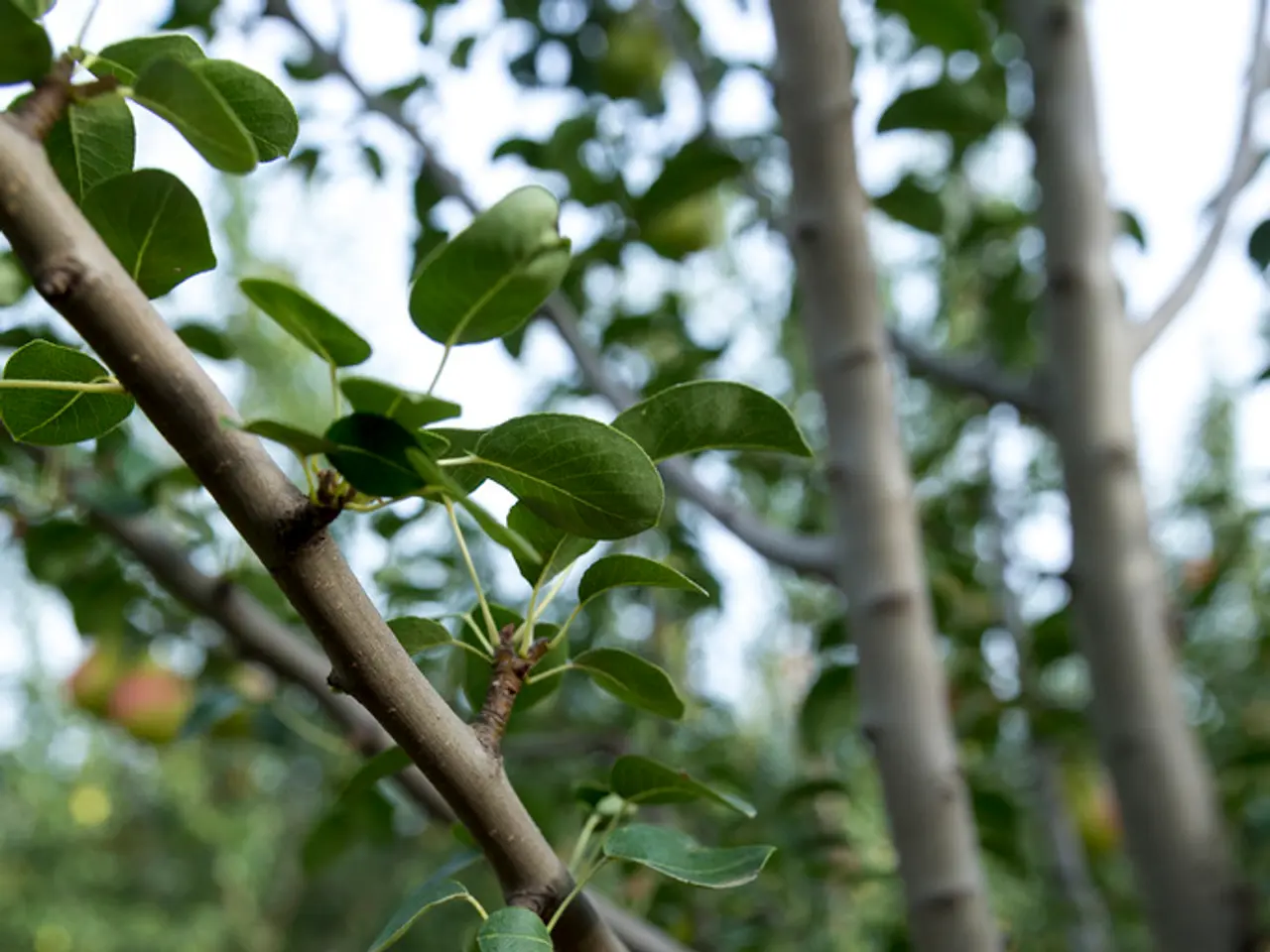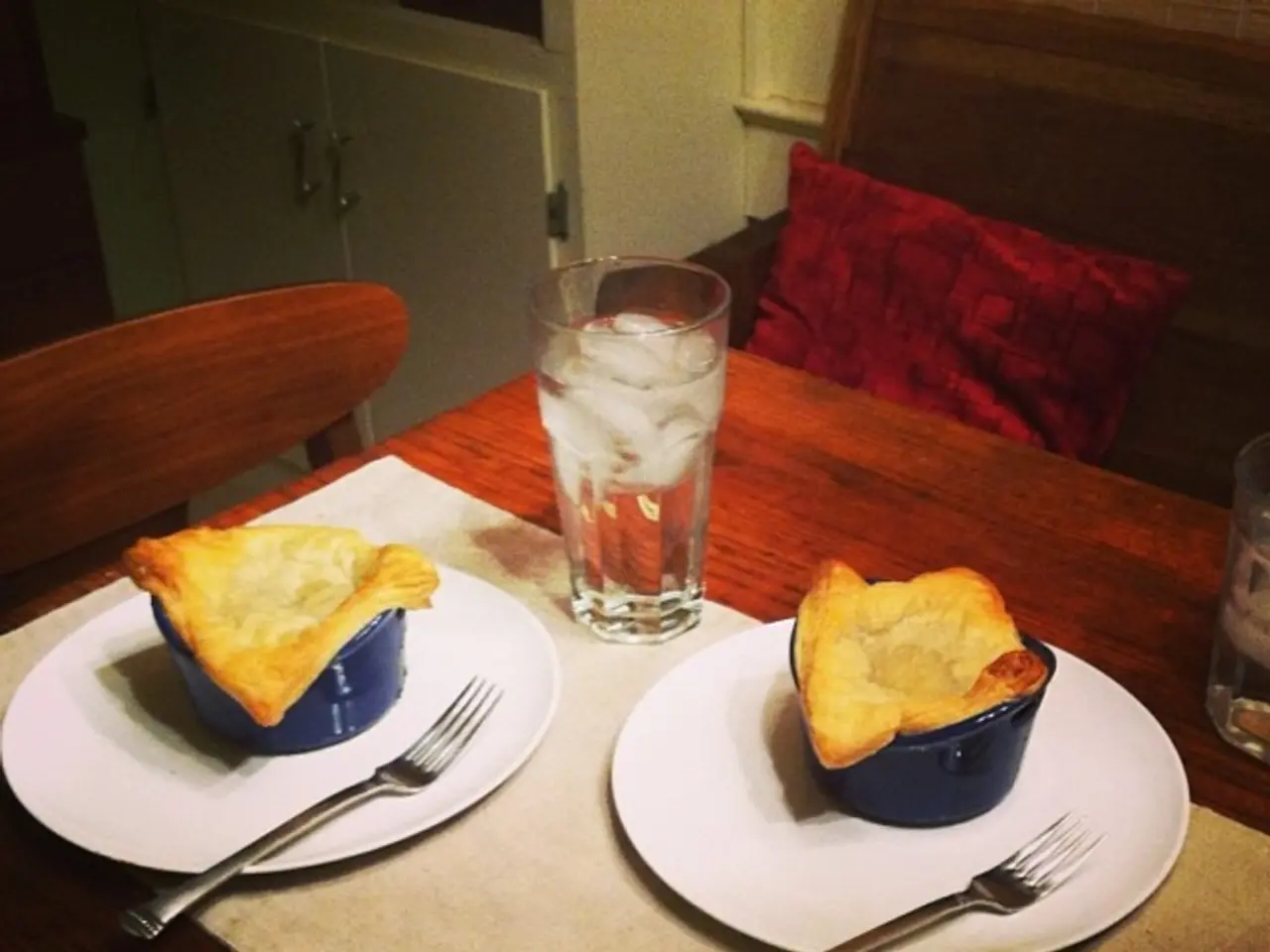Top-Performing Crab Apple Trees for Optimal Harvest
Crab apples, small to medium-sized trees beloved for their ornamental value and pollination capabilities, are a popular choice in gardens. These trees offer an array of attractive features, from their stunning blooms to their colourful fruits that can be used for making jellies.
## Ornamental Crab Apple Trees
Three standout crab apple trees for ornamental purposes are the Double-Flowered Crab Apple (Malus ioensis 'Plena'), the Japanese Flowering Crabapple (Malus floribunda), and the Chinese Flowering Crab (Malus spectabilis).
The Double-Flowered Crab Apple boasts stunning double pink blossoms, vibrant autumn foliage, and small green to yellow crab apples. It grows to be 4–6 meters tall and 3–5 meters wide, with a rounded shape. Requiring full sun to part shade and minimal pruning, this tree is a beautiful addition to any garden.
The Japanese Flowering Crabapple is known for its profusion of pink buds opening to white blossoms, arching branches, and colourful fruits persisting into winter. This medium-sized tree with a graceful form is often used in ornamental gardens for its floral display and autumn foliage.
Malus spectabilis, or the Chinese Flowering Crab, is notable for its vibrant flowers and ornamental appeal. The tree is often chosen for its showy blossoms and overall aesthetic.
## Pollination Partners for Culinary Apple Trees
While crab apples can act as pollination partners for several culinary apple varieties, they are not ideal due to their different flowering periods and genetic makeup. For most culinary apple trees, other apple varieties are better pollination partners. However, some crab apples can provide cross-pollination under certain conditions, such as Malus ioensis (prairie crabapple).
For culinary apple trees, it's best to choose pollination partners that are not closely related and belong to the same flowering group. Some examples include Fuji pairing well with Crunch-A-Bunch, Cortland, Chestnut Crab, Goldrush, or Sweet Sixteen, and Golden Delicious or Granny Smith producing more fruit when planted with other apple trees.
## General Considerations for Pollination
When selecting pollination partners, consider the flowering groups to ensure compatibility, avoid closely related trees for effective pollination, and remember that triploid varieties are not self-fertile and require additional pollinator trees, while fully self-fertile varieties still benefit from additional pollinators.
Crab apple trees, with their diverse range of sizes, colours, and blooms, make an excellent addition to any garden. Whether you're looking for an ornamental tree or a pollination partner for your culinary apple trees, there are several options that stand out. Malus ioensis 'Plena', Malus floribunda, and Malus spectabilis are all stunning choices for ornamental purposes, while Malus ioensis can offer some level of pollination for culinary apple trees. For optimal results, it's best to plant another compatible apple variety as well.
In the realm of home-and-garden enthusiasts, the ornamental value and pollination capabilities of crab apple trees make them a highly sought-after choice for gardens. Three exceptional crab apple trees for an appealing home-lifestyle and garden aesthetics are the Double-Flowered Crab Apple (Malus ioensis 'Plena'), the Japanese Flowering Crabapple (Malus floribunda), and the Chinese Flowering Crab (Malus spectabilis). Their striking blooms, vibrant foliage, and fruiting features not only enhance the beauty of your garden but also serve as potential pollination partners for certain culinary apple trees.




